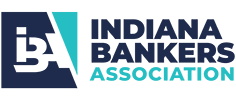What is a Safe Harbor 401(k) Plan?
A safe harbor 401(k) is a specific 401(k) retirement plan design that allows sponsoring employers to avoid certain compliance testing. Many aspects of 401(k) plans are subject to compliance testing to ensure that higher paid employees and owners don’t benefit from the plan disproportionately in comparison with the rank-and-file employees. Put another way, the plan’s provisions must not unduly discriminate in favor of owners and the highly paid.
Among other items, employee contributions (i.e., salary deferrals) and employer matching contributions in a 401(k) plan need to pass nondiscrimination testing. These contributions are normally subject to the actual deferral percentage and actual contribution percentage tests, which compare the relative benefits received by the rank-and-file and the owner/highly paid groups. A 401(k) plan that satisfies the safe harbor requirements may be deemed to pass both tests: allowing the owners and highly compensated employees to contribute up to the maximum allowed amounts even if the rank-and-file choose not to participate and contribute actively. In other words, the plan has a “safe harbor” from being required to pass the usual tests.
What Are the Requirements for a Safe Harbor 401(K) Plan?
First, the safe harbor feature must be contained in the plan document. In other words, the plan document needs to state that this plan is designed to satisfy the ADP and ACP tests through the safe harbor feature. Second, the employer must offer and/or provide specific contributions to employees. The employer can choose between a matching contribution or a nonelective contribution. The matching formula must provide at least a 100% match of any employee deferrals up to 3% of compensation and 50% of any deferrals between 3-5% of compensation. The nonelective contribution, which is not based on employee deferrals, must be at least 3% of compensation.
Employers that choose to make the matching contribution must notify employees of the safe harbor feature. The notice requirement is not applicable if the employer decides to make a nonelective contribution. Although employers are only required to make a safe harbor contribution to non-highly compensated employees, an employer could choose to provide a contribution to all eligible employees.
What Are the Timing Requirements for Adding a Safe Harbor Feature to a 401(K) Plan?
The SECURE Act of 2019 has provided some changes to the safe harbor 401(k) feature. Employers now have more flexibility in adopting this plan design. One of the changes allows employers to add the safe harbor feature as late as the last day of the plan year following the year that it would apply to. For example, if an employer has a calendar-year 401(k) plan, and the employer decides to add a safe harbor feature for the 2022 plan year, the employer has until Dec. 31, 2023, to do so.
The requirements for contributions and notices are different, depending on when the employer decides to add the safe harbor feature:
- If an employer with an existing 401(k) plan decides to add the safe harbor feature for the upcoming plan year, the employer may choose to make either the matching contribution or the nonelective contribution described earlier. The matching contribution requires the employer to provide a notice to employees within a reasonable time (generally 30-90 days) before the plan year starts.
- If an employer with an existing 401(k) plan decides to add the safe harbor feature for the current plan year, the employer can do so if it provides a minimum nonelective contribution of 3% of compensation and amends the plan document to add the safe harbor feature with at least 30 days left in the plan year (by Dec. 1 for calendar year plans). After that, the minimum nonelective contribution must be at least 4% of compensation.
- If an employer with an existing 401(k) plan decides to add a safe harbor feature for the prior plan year, it can do so if it adopts the feature by the last day of the current plan year and provides at least a 4% nonelective contribution.
- If an employer is establishing a 401(k) plan or adding a 401(k) feature to an existing profit-sharing plan, it can add a safe harbor feature if there are at least three months left in the first plan year in which employees can make elective deferral contributions. In this scenario, the employer could choose between the matching or nonelective contribution options.
What Are the Benefits of the Safe Harbor 401(K) Plan Design?
As mentioned earlier, the safe harbor 401(k) plan design may provide relief from the ADP and ACP nondiscrimination tests and allow the higher paid employees and owners to maximize their contributions. With the new timing options for adding a safe harbor feature, it is now possible to satisfy the ADP and ACP tests with safe harbor contributions after the results of these tests are available.
There are other benefits that should also be considered. A 401(k) plan may be deemed to pass the “top-heavy” compliance test by satisfying the safe harbor plan requirements. In a 401(k) plan that does not use the safe harbor design, if more than 60% of plan assets are in the accounts of the company’s key employees, an additional contribution may have to be made on behalf of the non-key employees. The only caveat here is that if an employer decides to provide any additional contributions beyond those required to meet the safe harbor requirements, then the top-heavy test needs to be satisfied.
Another benefit of this plan design is that safe harbor contributions can offset other employer contributions, such as the required minimum contribution to satisfy the top-heavy test or the minimum gateway contribution for cross-tested employer profit sharing contributions.
The safe harbor design may not be a perfect fit for every employer plan; however, it is certainly a feature that is worth exploring — especially for employers that struggle with passing the ADP and ACP compliance tests.
Anna assists clients with technical compliance questions through Ascensus’ 800 Consulting Service, instructs internal training, prepares plan documents and plan document reviews. Her expertise includes employer-sponsored retirement plans, such as 401(k) plans and 403(b) plans, SEP plans, SIMPLE IRA plans, as well as Traditional IRAs, Roth IRAs, Coverdell education savings accounts and health savings accounts.
Email Anna at Anna.Noble@Ascensus.com










